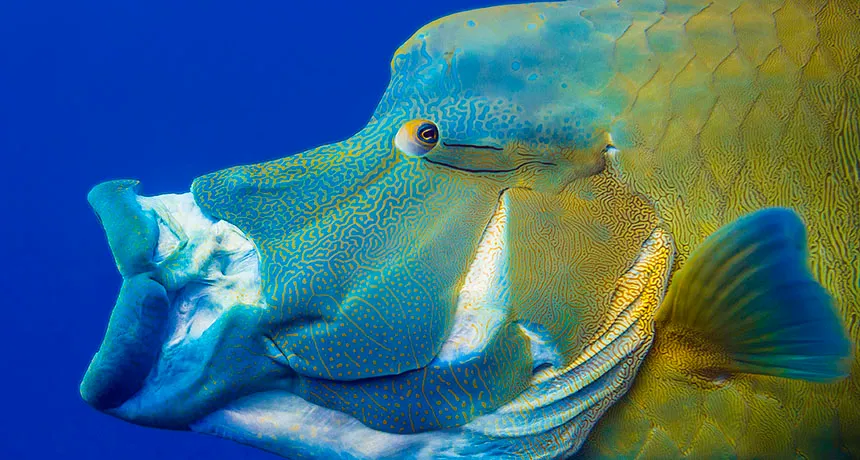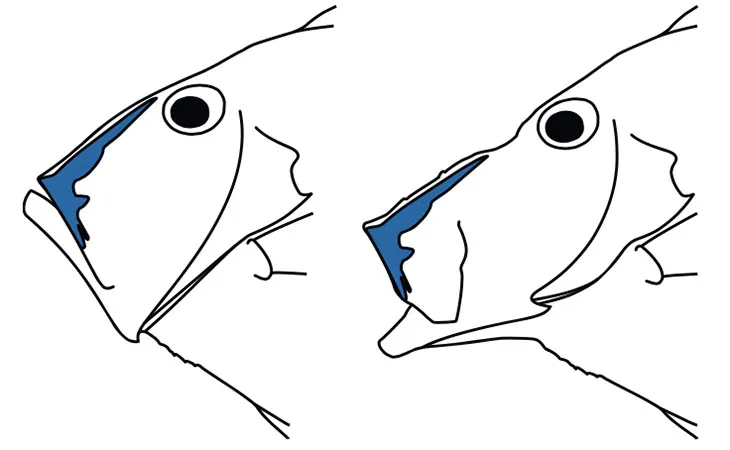Fish have had telescoping jaws for 100 million years

A Maori wrasse (Cheilinus undulatus) protrudes its jaws forward to help the fish catch a meal. This jaw-stretching strategy has become more dramatic and widespread over the last 100 million years.
© João Paulo Krajewski







